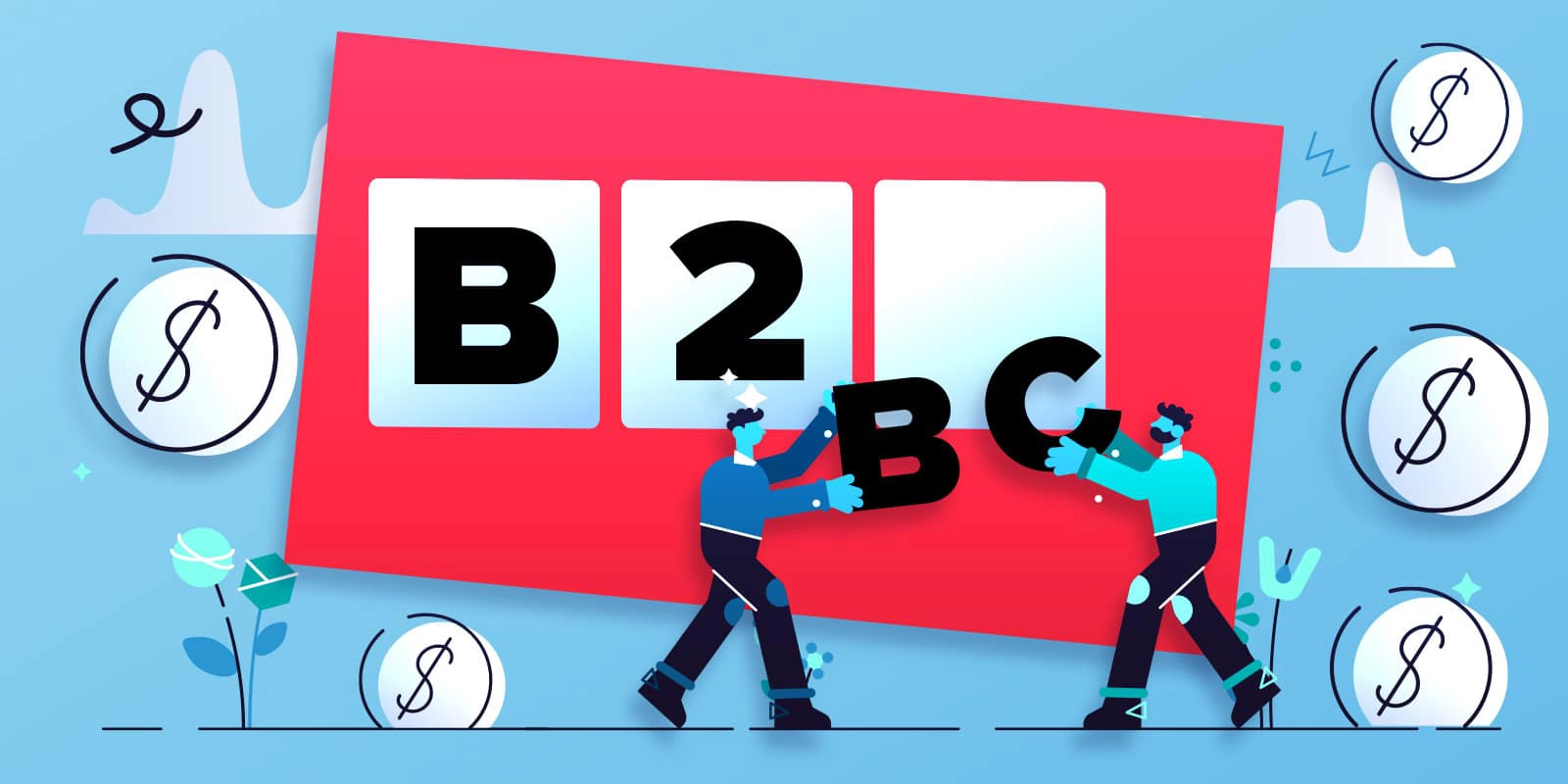First of all—What is B2B & B2C?
“B2B” – otherwise known as business-to-business – is a term that describes the commercial transaction between two businesses or corporations. Examples of B2B transactions include:
- A clothing boutique buys tshirts at wholesale from a clothing manufacturer prior to selling them in their shop.
- A local restaurant purchases meat from the town butcher.
- A construction company builds commercial office space for a
In contrast, “B2C,” or business-to-consumer transactions take place between business suppliers and consumers. Some examples of B2C transactions:
- Purchasing a watch or piece of jewelry from your local jeweler or favorite online brand.
- Buying airplane tickets for a family vacation
- Paying a moving company to help you relocate your belongings during a move.
B2B vs. B2C Marketing
When it comes to digital marketing, the same marketing strategies and tactics that work for B2B companies aren’t going to be as successful for B2C, and vice versa— simply because the customer and audience types are so different.
B2B brands focus on selling goods and services directly to other businesses, whereas B2C brands are trying to sell their products and services directly to customers for personal use. As such, each business type is going to take a different approach to online marketing.
Here is a chart below to help you understand the differences between each:
| Business-to-Business (B2B) | Business-to-Consumer (B2C) | |
|---|---|---|
| Focus |
o Educate o Cultivating & maintaining relationships o Educating prospects |
o Entice o Appeal to a challenge, interest, or need o Trigger an emotional response o Offer a solution o Entertain |
| Target Audience |
o Corporate teams/committee |
o Individuals and end-users |
| Language & Tone |
o Use industry terms o Professional o Rational/logical o Formal o Direct |
o Echo consumer language (read: digital listening) o Personal o Emotional o Straightforward o Sense of urgency |
| Motivation for purchase |
o The needs of the company/employees |
o Emotional desire, instant gratification |
| Customer Experience |
o Consultive sales o Strong customer service o Open communication | o Enjoyment o Ease/Efficiency o Convenience |
| Marketing Musts |
o Lead generation o Discuss ROI and improving business performance o Requires more nurturing o Salespeople | o Digital advertising o Email marketing o SEO o Social proof (social media, reviews) o Calls to action & incentives o Make your brand relevant, memorable o Visual appeal |
Of course, the differences in these two types of marketing approaches aren’t hard-and-fast—there certainly can be overlap between B2B and B2C marketing tactics.
Common Mistakes to Avoid When Transitioning from B2C to B2B or B2B to B2C
Transitioning your business from B2B to B2C or B2C to B2B? Here’s what NOT to do during the big switch:
B2B DON’Ts:
- DON’T spend too much time on the wrong platforms.
Attempting to generate leads on social media platforms that are more tailored for consumers than other businesses (i.e. Instagram, Vimeo, Tumblr, Pinterest) is only a waste of time. Ideal social media networks for B2B include platforms like LinkedIn, Twitter, and Facebook. LinkedIn especially is an excellent platform for generating leads and cultivating business relationships.
Need help learning the ins and outs of LinkedIn for B2B?
Purchase our step-by-step on-demand training!
B2C DON’Ts:
- DON’T forget your touch points.
The goal of B2C marketing is to make it fast and simple for consumers to purchase your product or service. Therefore, make sure you’re creating clear calls to action with quick and easy ways for your consumer to complete their purchase. - DON’T lose sight of your customers’ pain points.
Remember, your product or service has been created to meet a specific need. Make it obvious what its purpose is and appeal to the consumer who will most benefit from what you’re offering. - DON’T try to be clever.
If it doesn’t come naturally, your cleverness likely will go right over your consumers’ heads. The best way to get customers to buy your product or service is be getting straight to the point. Trying too hard to come across as witty or clever backfires more often than not.
At the end of the day, understanding your business model is the number one step in creating an effective marketing strategy that will ultimately lead to success.
Sources:
- https://www.business2community.com/marketing/b2b-vs-b2c-marketing-9-key-differences-02382147
- https://www.wordstream.com/blog/ws/2019/05/20/b2b-vs-b2c
- https://www.tapinfluence.com/why-your-b2b-marketing-strategy-doesnt-work/
- https://smallbusiness.yahoo.com/advisor/resource-center/we-live-in-the-era-of-e-commerce-with-b2c-e-commerce/




